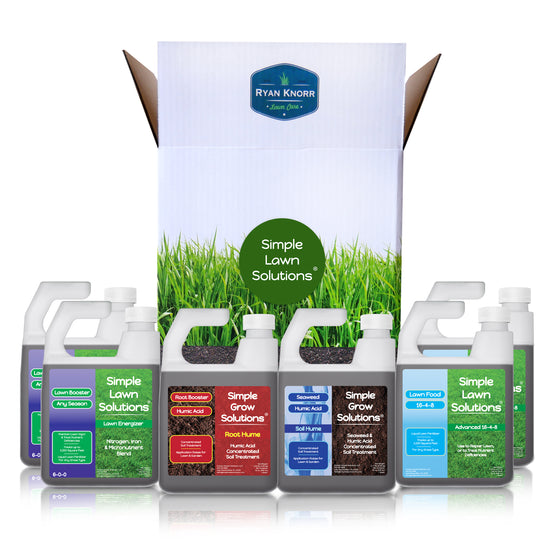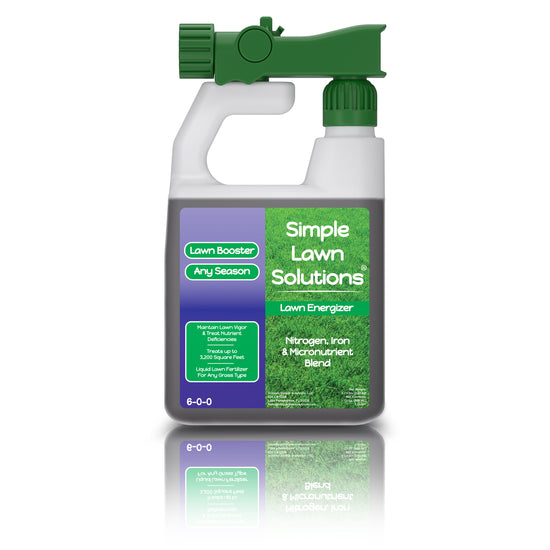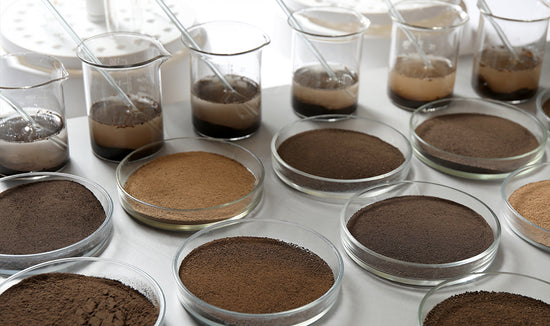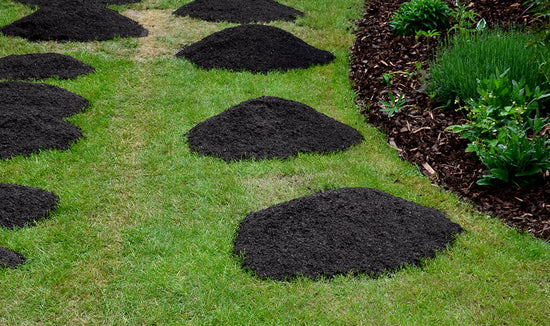Looking out over a yard that is dead, patchy, and unkempt can cause stress and anxiety. You don't want to be the only home on your block that doesn't have a lush, thriving lawn! You may assume that the yard your home sits on is unchangeable. However, there are many ways that you can grow grass that will be the talk of your neighborhood. It will also provide you with an extra boost of confidence as a property owner!
When working to grow grass that is the greenest on the block:
- Identify the type of grass your lawn is made of
- Get a soil test
- Understand macronutrients and how they can help you grow grass
- Choose fertilizer wisely: liquid lawn nutrients vs. granular fertilizers
- Mow your lawn
- Practice proper seasonal lawn care
- Hydrate!
Figure Out What Type of Grass You Have
Many homeowners have no idea what kind of grass is growing in their front and back yards. This can make lawn care difficult, as not all grass requires the same type of care. Rather than trying lawn care processes at random, identify your grass first!
The region of the country that you live in will give you your first clues as to your yard's particular grass type. The southern part of the United States is a perfect environment for you to grow grass referred to as warm-season grass. Those in the northern United States grow grass regarded as cool-season grass. If you are in the middle of the country, also known as the transition zone, it's quite likely that your lawn is made up of a variety of grass types.
All About Soil Health
Now that you know that your lawn may be a grass that is warm-season or cool-season, you'll next need to test your soil's health. We recommend getting a lab-conducted soil test. A yard that does not have the right makeup of nutrients won't provide the kind of conditions your grass needs to grow healthy and green.
Know Your Lawn Macronutrients
The three most essential macronutrients are nitrogen, phosphorus, and potassium. These nutrients are referred to as NPK on lawn care products. The combination of these three lawn nutrients can help your lawn thrive.
Each macronutrient in the combination does something specific to bring your lawn to its greenest potential.
- Nitrogen (N): By far the most important of the three lawn nutrients, nitrogen gives your lawn its color. Lawns that are suffering from nitrogen deficiency often appear yellowish or pale green, patchy and thin, are overgrown with weeds, and may suffer from low-N diseases like dollar spot.
- Phosphorus (P): Phosphorus works below the surface of your lawn, to help with root growth. If you are seeding your lawn, it is essential to introduce phosphorus at this stage. It will ensure that your roots have the right nutrients they need from the beginning of growth. A quick test for phosphorus will tell you whether you need to introduce more phosphorus into the soil.
- Potassium (K): Potassium is vital to the internal workings of your lawn. At the cellular level, it facilitates photosynthesis, protein production, and water absorption, all of which are critical to the health and growth of your lawn.
The Importance of Mowing
The most fundamental aspect of lawn care is consistently mowing your lawn. While you may be tempted to cut your grass super short, you should leave your grass slightly longer than you may expect during high-stress seasons of extreme temperatures. The longer blades can provide shade to the lower parts of each plant, which also traps and preserves moisture closer to the roots. It also provides more leaf area for photosynthesis to occur.
Regular mowing will keep your grass looking full and healthy. Weekly mowing is best if you live in an area of consistent rainfall, which can help you grow grass more quickly. In dryer parts of the country, you will not need to mow quite as frequently.
Proper Seasonal Lawn Care
Depending on the season, you will need to take different lawn care steps to ensure that your grass remains green and healthy. Autumn will require you to practice the most intensive lawn care in preparation for your grass to fall dormant during the winter. Leaves will carpet your yard, so you will want to rake consistently to avoid moisture becoming trapped under the leaves and breeding disease.
Next, you'll want to break up soil compaction through aeration! Our yards put up with a lot of pressure throughout the year. You'll spend a ton of time pushing your mower across your lawn to keep your grass at the correct height. Your pets and other wildlife will run across your property. Children will spend time playing in the front and back yard. All the pressure that mowing, animals, and family exert on the ground will cause the soil to become more densely packed. Compacted soil makes it more difficult for roots to grow and prevents essential lawn nutrients, such as NPK, from reaching and nourishing the roots. Soil that requires aeration will cause the grass to look stressed, lose its healthy green color, and start to thin. The ground will also feel dry and hard to the touch.
During the spring, you'll want to wait until your soil and grass have come to life a bit before starting any serious lawn care. Your first step will be to break out your rake and collect all the leftover leaves, twigs, and other detritus that have been trapped under snow or ice during the winter. You won't grow grass you can be proud of with a lawn covered in leftover leaves!
You'll want to get yourself back on a regular watering schedule as well. When your grass begins to grow after lying dormant all winter, the roots will require deep, thorough hydration to remain healthy. Finally, check your front and back yard for any bare patches of soil. Fill them in with grass seed to ensure that you grow grass in even sections.
The summer is a time for your grass to shine! To grow grass that is healthy and lush during the warm months, you'll need to stick with a consistent schedule of watering, mowing, and fertilizing. In the summer, you'll need to be vigilant for signs of drought, which will require you to hydrate your lawn more deeply.

Hydrate Your Yard's Roots
Providing liquid lawn nutrients to your yard is a must for overall root health. This is no substitute for good old-fashioned H2O! Except during winter, when your lawn lies dormant, you'll want to water your yard consistently to ensure maximum health and growth.
You may be thinking, "the more water, the better," when considering how much to water your lawn. Your yard will need at least 1-2 inches of water every week, either through rainfall or your watering during dryer months. Deeply watering your lawn, especially after you have aerated the soil, will allow water to reach the deepest roots. Overwatering your lawn can end up breeding fungus, disease, or even death if your roots drown.
Our Favorite Products for Green Grass
By now, you are an expert on lawn care. You know what type of grass is growing in your yard. You know how to maintain your lawn during different seasons and which macronutrients to look out for when choosing granular fertilizer or liquid lawn nutrients. Even the savviest homeowner could use a little advice on which products to buy to grow grass that stands out. We’ve picked a few of our favorites to round out your lawn care regimen:
- Lawn Food: 3-18-18 High Phosphorus and Potassium - One of the best liquid lawn nutrient blends we offer, this 3-18-18 solution increases the mobility of phosphates, resulting in root vigor while providing key nutrients for a healthier, stronger lawn.
- 6-0-0 Lawn Energizer - A great combination of nitrogen and iron, best if not watered in and used as a foliar application for a lush, deep green lawn.
We at Simple Lawn Solutions are here to help your grass flourish no matter what! Check out our blog for more information about proper lawn care, essential lawn nutrients, and more!











2 comments
Hello James, thank you for commenting. Please reach out by email hello@simplelawnsolutions.com so we can make recommendations for your lawn.
For a Bermuda grass lawn in Oklahoma, would the 16-4-8 or 15-0-15 be better?